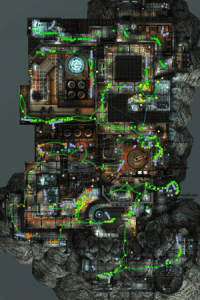
The outcome of a game session is derived from a series of events, decisions, and interactions that are made during the game. Understanding and extracting data from these sessions is important to analyze the gameplay, to the understanding of the player’s profile, and even to validate the business model applied in the game. Many tools and techniques have been developed by the game industry in order to track and store data from a gaming session. One successful method is game analytics, which aims at understanding player behavior patterns to improve game quality and enhance the player experience. However, the current methods for analytics are not sufficient to capture the underlying cause-and-effect influences that shaped the outcome of a game session. These relationships allow developers and designers to better identify possible mistakes in gameplay design or to fine-tune their games. Thus, in our previous work we proposed a novel approach based on provenance to track and record these causal
relationships, providing the necessary groundwork to use provenance information in game analytics. The current work extends our original approach by providing an improved method for tracking provenance data during game sessions as well as introducing georeferencing capabilities during analysis. Through this work, we can plot the provenance data in the game
level map in order to improve the data mining process, allowing developers and analysts to know exactly where each action or event occurred in the game, along with the previous temporal notion of when it happened. Furthermore, we take the provenance analysis to a new level, allowing the analysis of multiple provenance graphs simultaneously by generating a summarized provenance graph for analysis. This summarized graph is useful for game designers, aiding the detection of patterns in player’s behaviors, identifying issues not reported by game testers, confirm hypotheses formulated by the development team, and even test monetization issues.

